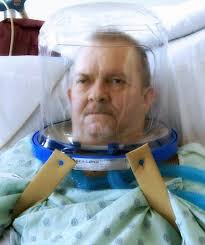 Helmet noninvasive ventilation has been used under the premise that it’s interface is more effective than mask interface in delivering prolonged treatments with high positive airway pressure, because it is associated with fewer air leaks and better fitting for different facial contours.
Helmet noninvasive ventilation has been used under the premise that it’s interface is more effective than mask interface in delivering prolonged treatments with high positive airway pressure, because it is associated with fewer air leaks and better fitting for different facial contours.
Helmet noninvasive ventilation may be associated with less risk for skin pressure injury, eye irritation, and aerosol generation.
